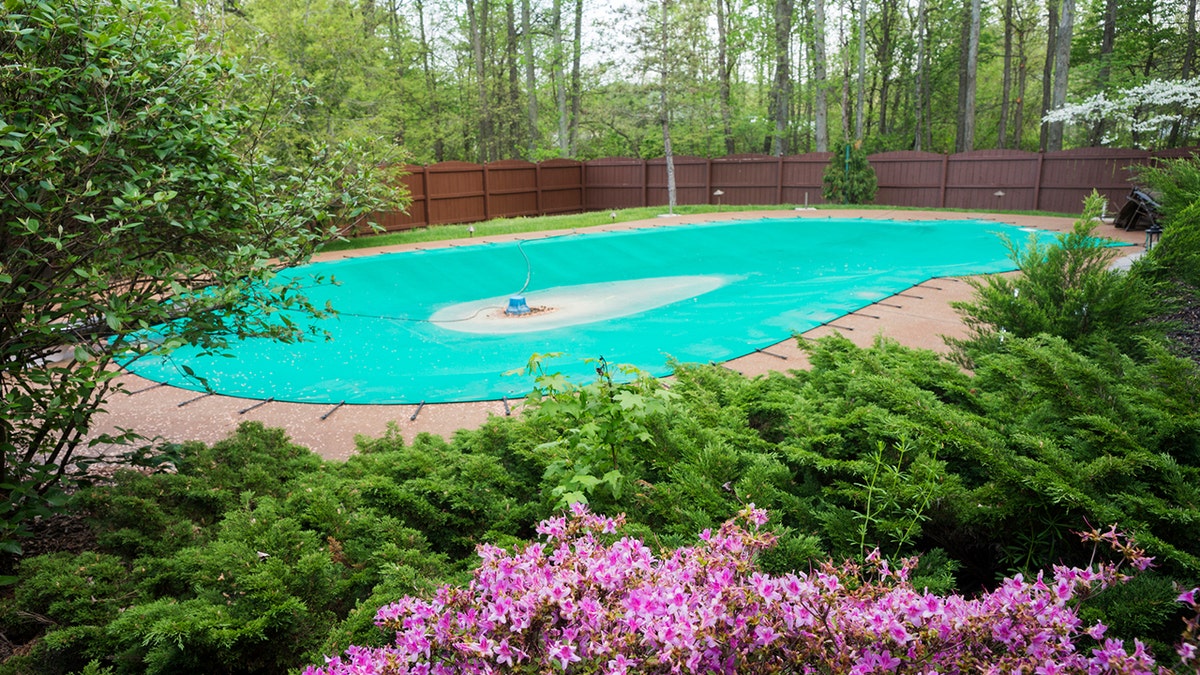
Colder temperatures will soon arrive, making it wise to prepare now. (iStock)
Labor Day weekend gives homeowners one last chance to take advantage of the warm weather, but it's also the time to think about how to winterize a pool.
“You need to protect it from the elements,” says Jimmie Meece, vice president of franchise operations with America’s Swimming Pool Co. in Macon, GA.
Freezing temperatures are the biggest concern, as pipes freezing and bursting underground is very expensive to identify and repair. But even in areas where winter means more rain and wind, proper winterization of your pool is important.
To help protect your pool from harsh conditions so you can jump right into the summer fun next year, here's a handy guide on winterizing it.
More From Realtor.com
When should you winterize?
It all depends on where you live. Homes in sunny Southern California or Arizona probably won't have to close at all. But if you live where it gets frigid, your pool will need to be winterized before temperatures dip to 32 degrees Fahrenheit to prevent water from freezing. Try to aim to have it shut down in October, or by Thanksgiving at the absolute latest, says Meece.
If the temperatures unexpectedly plunge to 32 degrees or below before you close, you can run the pool pump for a full 24 hours. As long as the water is moving through the pipes, it won’t freeze.
Clean before you close
Start by removing any debris from the pool. Since the water won’t be filtered or treated chemically during the winter, it’s critical to ensure the water isn’t dirty when you open up the pool in the spring.
Take your skimmer net and remove any leaves. If you leave organic material in the pool for months, it can stain the surface of the pool. Be sure to store equipment like ladders or toys, too.
Next, ensure all of your pool chemicals are in the recommended range for your individual pool. Take a water sample to your local pool store if you don’t already know the recommended ranges. Meece says you want to focus on these three ranges: chlorine, pH, and alkalinity.
Lower the water level
Lower the water level about 1 to 6 inches below the skimmer on the side of the pool, with the waterline below the tiles. Why? If the water freezes, the tiles can crack.
However, you don't want to drain the pool entirely. A swimming pool with little or no water can become unstable due to hydrostatic pressure from underground water.
"If heavy rain comes in, the pool can pop out of the ground a foot or two,” Meece says. If this happens, the entire pool will require major work to have it back up and running.
Treat the water
After you’ve cleaned the pool, consider adding chemicals to help prevent an algae bloom. Since algae eat phosphate, experts suggest adding a phosphate remover treatment and a stain prevention product too.
Winterize the equipment
All of the plumbing needs to winterized, including the pump, heater, filter, and underground pipes. To do this, use a wet-dry vacuum or compressed air to remove water from the line.
Afterward, an antifreeze may be placed in the pipes. The equipment should then be plugged to prevent water from getting inside.
With the right tools, winterizing is certainly something a pool owner can handle, but if you don't feel confident, hire a pool professional.
How much does it cost to winterize a pool?
According to Benjamin Basch, chief development officer for American Pool Enterprises in Owings Mills, MD, the cost of winterizing a residential pool can range from $250 to just under $1,000.
Add a cover
After you’ve treated the water and winterized the gear, cover the pool. This can help prevent leaves, debris, and even animals from getting in the pool.
One reliable option is a winter pool cover, which is made from a plastic fabric and is held in place by anchors surrounding the pool. These covers do a great job at keeping out dirt, leaves, and other debris. You can also use a tarp cover that’s held down by water bags surrounding the pool, but it could be a drowning hazard.
No matter what cover you choose, it’s a good idea to take a leaf blower and use it to get rid of excess debris on the cover.
Peek during the winter
Peek under the cover once a month to make sure nothing is amiss. Meece also advises pouring about a gallon of chlorine or household bleach in the pool once a month to help prevent bacteria and algae from growing.
When to reopen the pool (and why it matters)
Don't wait for warm temperatures to pull the cover off your pool.
“The longer someone waits into the spring and summer to open their pool, the greater the risk the water will become stagnant and an algae bloom will take place," Meece says.
The exact time you should reopen the pool depends on where you live, but do it before temperatures reach 70 degrees. Why? Water temperatures around 70 are optimal for the growth of algae. Trust us, that's one cleanup job you want to avoid.